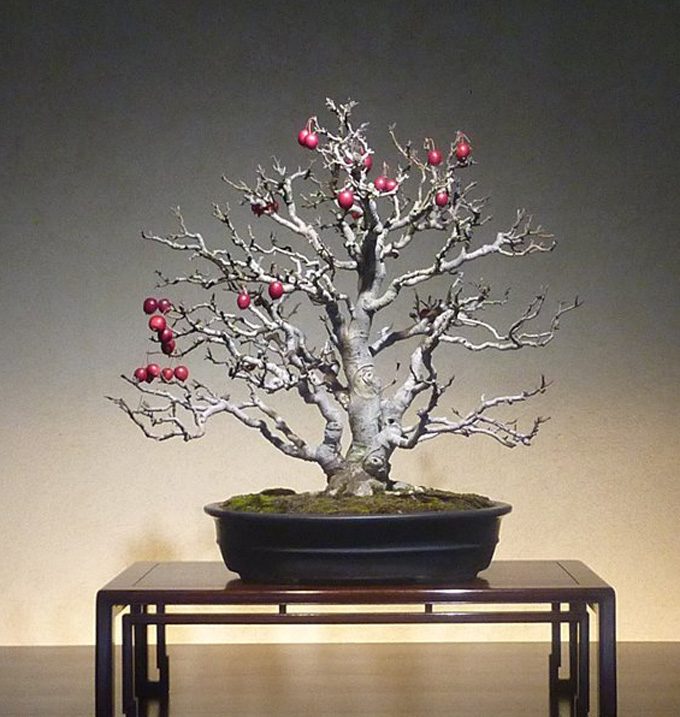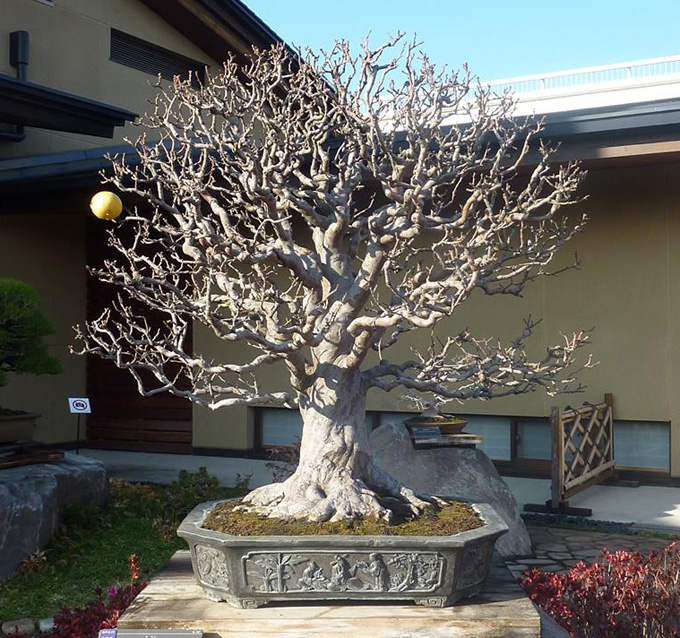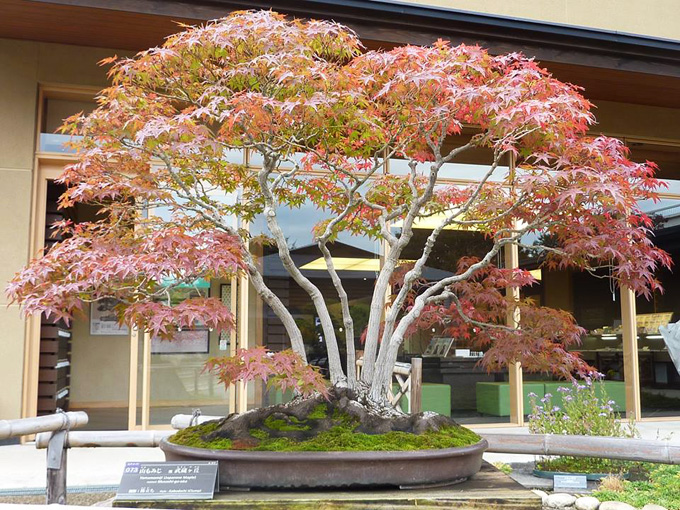 This old triple trunk Japanese white pine (aka Japanese five needle pine, aka Pinus parviflora or parvifolia) resides at the Omiya Bonsai Art Musem in Saitama Japan. There’s a lot to like here, including the ancient bark, a great pot and a nice play of shadows and light as a little bonus.
This old triple trunk Japanese white pine (aka Japanese five needle pine, aka Pinus parviflora or parvifolia) resides at the Omiya Bonsai Art Musem in Saitama Japan. There’s a lot to like here, including the ancient bark, a great pot and a nice play of shadows and light as a little bonus.
First a confession. The title of this post ‘Bonsai Meets Pop Music’ has little if anything to do with the bonsai shown here. However, if you scroll down, you’ll see that it wasn’t made up out of thin air, and if you read Japanese, some light may be shed (I’m waiting for your comment).
All the trees shown here are from the Omiya Bonsai Art Museum, which houses, without doubt, one of the best bonsai collections anywhere. Here’s their website and here they are on facebook.
 Crabapple. There nothing quite like viewing deciduous trees in the winter when the entire structure down to the tiniest detail is revealed (this never happens with evergreen bonsai). And then there’s the fruit, which adds color just when we need it the most. Speaking of the fruit, I like the way it’s randomly distributed.
Crabapple. There nothing quite like viewing deciduous trees in the winter when the entire structure down to the tiniest detail is revealed (this never happens with evergreen bonsai). And then there’s the fruit, which adds color just when we need it the most. Speaking of the fruit, I like the way it’s randomly distributed.
 If you can ignore the background noise for just a minute, you’ll see one of the finest and most powerful Chinese quince (Karin) in the world. Again, in all its naked splendor and with just one fruit (in case you don’t believe it’s quince).
If you can ignore the background noise for just a minute, you’ll see one of the finest and most powerful Chinese quince (Karin) in the world. Again, in all its naked splendor and with just one fruit (in case you don’t believe it’s quince).
 This elegant Japanese Maple caught my eye as I was once again scrolling through ten thousand facebook photos, and as one thing leads to another, is the reason for this post. It’s named Musashigaoka. Turns out several of the trees at the Omiya Bonsai Art Museum have names.
This elegant Japanese Maple caught my eye as I was once again scrolling through ten thousand facebook photos, and as one thing leads to another, is the reason for this post. It’s named Musashigaoka. Turns out several of the trees at the Omiya Bonsai Art Museum have names.
